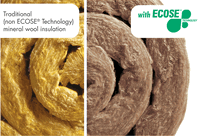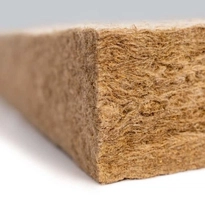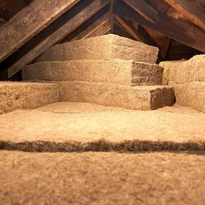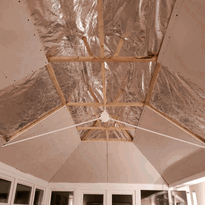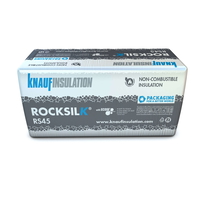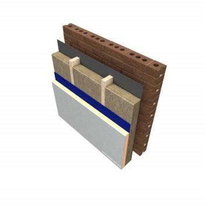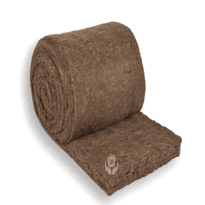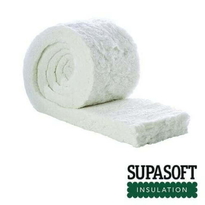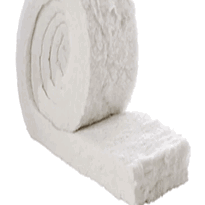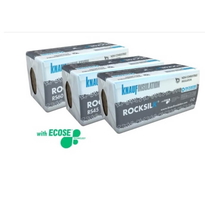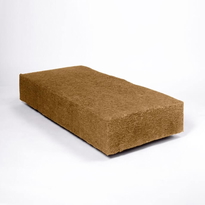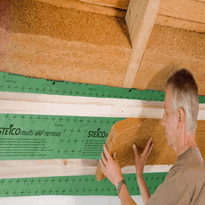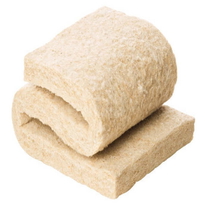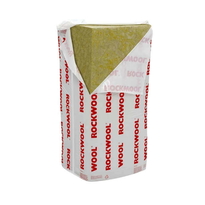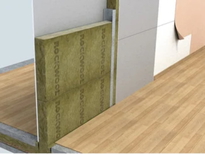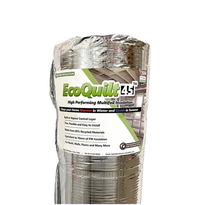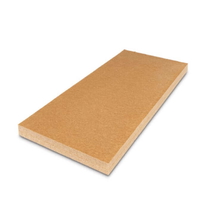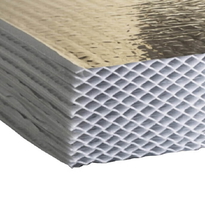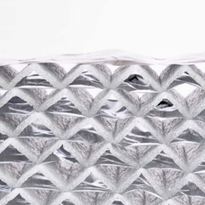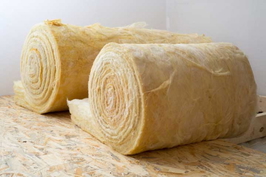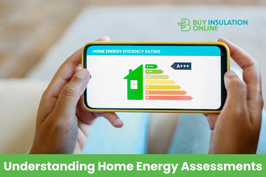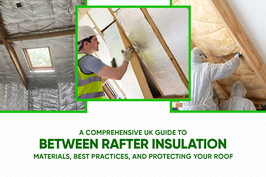Top Material Choices for Rafter Insulation
Selecting the appropriate material for rafter insulation involves evaluating several options based on factors such as thermal performance, cost, durability, and ease of installation. PIR rigid board insulation is commonly used for full loft conversions due to its high thermal efficiency and long-lasting durability. However, it requires careful installation and tends to be among the more expensive options available. Single-layer foil insulation is suitable for storage lofts, providing basic temperature regulation at a lower cost. It's generally more affordable than PIR insulation and offers ease of fitting. Multi-layer foil insulation offers improved thermal control, making it an ideal choice for hobby rooms or areas where enhanced insulation performance is desired. Fibreglass batts are a cost-effective and popular option, especially for DIY enthusiasts. They're easy to install and versatile but typically have lower K-values, meaning they may offer slightly less insulation performance compared to rigid insulating boards. While not the focus of this article, materials like spray foam are recognised for their high insulation capabilities; however, they come with higher material and installation costs, and are less common in typical UK residential projects. When selecting insulation, it is essential to consider the local climate, since different materials perform better in specific weather conditions to maximize energy efficiency. Ultimately, the choice of insulation material will depend on your specific insulating needs, your budget, and your experience or access to professional installation.
Comparing Eco-Friendliness and Sustainability of Insulation Types
Eco-friendly insulation materials are increasingly recognised for their potential to reduce environmental impact while providing effective thermal protection. As a result, understanding the sustainability and ecological benefits of different options is essential for making informed decisions.
Natural materials such as cork, sheep’s wool, hemp, and wood fibre are biodegradable, renewable, and often have lower carbon footprints due to efficient production methods. Studies show these materials can also improve indoor air quality by minimizing volatile organic compounds. Hemp, in particular, sequesters carbon effectively and requires fewer resources during cultivation. The recyclability of these materials further enhances their environmental credentials, supporting a circular economy.
- Cork and wool are non-toxic, reducing indoor air pollution and fostering healthier indoor environments.
- Hemp’s rapid growth cycle minimises land use and resource consumption, making it a sustainable choice.
- Natural insulations typically generate fewer emissions during manufacturing, supporting cleaner production processes.
- Many eco-friendly options offer improved thermal performance, which can contribute to lower energy consumption and reduced carbon emissions over the lifespan of a building.
Considering these factors can help UK homeowners and builders select insulation solutions that align with ecological principles while maintaining energy efficiency standards.
Installation Tips and Ease for Loft Rafter Insulation
Proper installation of loft rafter insulation requires careful planning and adherence to specific procedures to maximise thermal efficiency and ensure safety.
Initially, installers should gather all necessary tools, including insulation rolls, a utility knife, stapler, foil tape, drill, saws, and timber battens. Cutting insulation precisely to fit between rafters prevents gaps that could reduce its effectiveness, while securing it tightly with staples or pressing ensures a continuous vapour barrier. Accurate cutting helps to minimize waste and ensure a snug fit. Installing battens across rafters creates a cavity for internal linings and maintains ventilation gaps to prevent moisture build-up. Pre-fitting insulation and fixings can streamline the process, especially when working alone. Using modular sheets rather than many small pieces helps to maximise speed and minimise waste. Overall, preparing materials in advance and following a methodical approach significantly enhances ease and accuracy during installation.
Thermal Performance and R-Values of Common Insulations
Understanding the thermal performance and U-values of common insulation materials is essential for optimising loft insulation effectiveness. PIR rigid boards offer high thermal resistance in slim profiles, with thicknesses ranging from 12mm to 150mm. Using the correct thickness ensures that the insulation maintains its insulating properties without taking up excessive space in the loft area. When combined with insulated plasterboard, they can achieve U-values as low as 0.20 W/m²K, significantly improving energy efficiency. Installing PIR boards between rafters requires a minimum of 50mm ventilation gap to prevent moisture build-up and potential issues. Multi-layer foil insulation utilises reflective aluminium membranes to effectively reduce heat transfer through radiation. This type of insulation is especially suitable for frequently used lofts, such as hobby rooms, where maintaining consistent internal temperatures is important. Single-layer foil insulation primarily reflects radiant heat and provides limited thermal resistance, making it suitable mainly for shielding stored items from temperature fluctuations. Thermal bridging is a critical aspect to consider; installing rigid foam boards between rafters enhances overall thermal performance. For example, adding 50mm of rigid foam can increase the U-value resistance significantly, with 50mm of foam potentially reducing U-values to around 0.25 W/m²K, depending on the material. Proper installation of insulation materials is vital to achieve optimal thermal benefits and prevent gaps or compression that can reduce effectiveness.
Cost Considerations and Budget-Friendly Options
Cost considerations are a vital aspect of planning loft insulation between rafters, as they significantly influence the choice of materials and installation methods. Material costs for blanket or batt insulation typically range from £4.50 to £13.50 per square metre, making them some of the most budget-friendly options available. Proper installation and insulation type selection can optimize thermal performance while controlling costs. Installation charges vary from £13.50 to £31.50 per square metre, depending on regional labour rates and the complexity of the task, resulting in total costs generally between £900 and £4,500. To make the most of your budget, homeowners can consider using recycled materials, which are often more affordable and environmentally friendly. A DIY approach to installation can also help reduce labour costs, provided you possess the necessary skills and adhere to safety precautions. Additionally, regional or government incentives and grants may be available to help lower overall expenditure, offering affordable pathways to achieve improved energy efficiency in your home.
Conclusion
Selecting the appropriate loft insulation between rafters requires careful consideration of material properties, installation complexity, environmental impact, thermal performance, and cost. Combining materials such as mineral wool or fibre glass offers effective insulation with manageable installation, while sustainable options like sheep's wool provide eco-friendliness without sacrificing performance. Evaluating thermal transmittance through K-values and budget constraints ensures a practical, efficient solution that enhances thermal efficiency and reduces energy costs over time. Proper selection and meticulous installation optimise attic insulation's long-term benefits, contributing to warmer, more energy-efficient homes.

